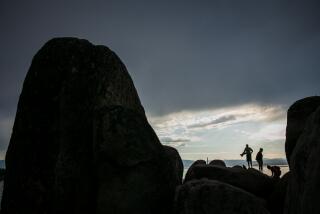Colorado jam
These are contentious days at the Grand Canyon, filled with bickering over who has the right to raft the Colorado River as it snakes through one of the country’s natural treasures.
The National Park Service stirred up a major flap last month by freezing the wait list for private rafters on the Colorado, coveted by river rats for its churning rapids. The list is already so long that reservations are backed up as much as 20 years. Adding to the battle is the debate over a new park service proposal due out in the coming months detailing how the Grand Canyon should be used.
At the heart of the controversy is a long-standing row between outfitting companies and recreational rafters. While outfitters are allocated about 70% of the trips downriver, private paddlers have to make do with the rest. That isn’t fair, contend the private river runners, because so many more people want to make the trip on their own these days. The outfitters, for their part, argue that they provide a service for many segments of society, ranging from the disabled to those who simply want to sit back and relax.
“We represent a huge segment of the public that can’t do it on their own,” said Brian Merrill, who heads Western River Expeditions and is president of the outfitters’ trade organization. “We’re the easier vehicle to do that right now.”
The private rafters counter that it’s really a money issue, with the access tilted to those who can pay the bucks. “If you can afford it, you can go,” said Kim Crumbo, who spent 30 years as a river guide and park wilderness coordinator before becoming regional director of the Arizona Wilderness Coalition. “If you can’t, you wait 20 years.” The tab for a commercial 14-day trip can run more than $2,000, while private paddlers can do it for less than half that price.
In 1940, fewer than 100 people had made the trip down the canyon’s rapids. But after World War II, rafting on the river became more popular. At the same time, commercial operators saw opportunity and began booking trips on the river by oared and motorized rafts. They became the prime source of trips down the Colorado, even as the number of private rafters was increasing dramatically -- to a point where the wait list swelled to more than 7,000 people this year. Paddlers chafe at not being able to get on the river to test their skills against potboiling sections like Lava Falls and Crystal Rapids.
Critics contend that a freeze on individual rafters signals that the park service favors outfitters, because there have been no restrictions placed on them. But Kate Cannon, a deputy superintendent at the park, said it was simply a matter of common sense because of the changes a new use plan might bring.
“It was the only responsible move because we thought it would not be right to allow people to get on a wait list that might not serve a purpose,” she said. “This isn’t our first planning attempt, but there have been a number of things that have stopped us in the past.”
Among other things, outfitters maintain that the 20-year wait is a bogus number and that anyone can raft the canyon if willing to fill a spot on a private trip on short notice.
Meanwhile, paddlers want the prime season extended and the number of launches split down the middle. Both sides do agree on something: The system needs to be overhauled, and they are waiting expectantly for the new proposal.
“We have no idea what the park is going to settle on,” said Merrill.
More to Read
Sign up for The Wild
We’ll help you find the best places to hike, bike and run, as well as the perfect silent spots for meditation and yoga.
You may occasionally receive promotional content from the Los Angeles Times.






